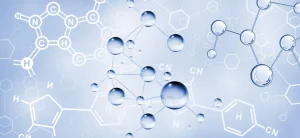Studies on the metal-catalyzed transformation of sulfoxide-based sulfones
As a typical multi-oxidation sulfide with a history of more than 100 years, sulfoxide sulfone has both sulfone and sulfoxide characteristics. Compared with the well-developed electrophilic and radical reactions, there are few studies on the metal-catalyzed transformations of sulfinyl sulfone. Recently, Zhu Dianhu’s group at Northwestern University and Shao Xinxin’s group at Hangzhou Normal

University have explored the metal-catalyzed transformation of sulfinyl sulfone, and the reduction coupling reaction of in situ generated redox-active sulfinyl sulfone with aryl/alkyl/alkenyl/alkynyl halides can be achieved under mild conditions using inexpensive nickel catalysts, and the related research results have been published in the flagship journal of the American Chemical Society, ACS Catalysis.
Considering the importance of different oxidation states of sulfur for the chemical properties of sulfur-containing organic molecules in synthetic chemistry, biomedicine, and materials science, the development of new methods for the selective construction of carbon-sulfur bonds with specific sulfur oxidation states is of high applied demand and considerable scientific interest. Prior to 2021, the development of sulfinylsulfones was extremely slow, focusing mainly on the characterization of their physical and chemical properties, due to the recognition of the instability of sulfinylsulfones and the lack of reliable synthetic methods, which limited their use as electrophilic sources of sulfur.After 2021, simple and convenient methods for the synthesis of sulfinylsulfones greatly facilitated research on the free-radical transformations of sulfinylsulfones (Fig. 1A). Notably, as an important pioneer in the field of sulfinyl sulfone research, the group of Xihe Bi at Northeast Normal University reported for the first time in 2021 that in situ-generated sulfinyl sulfones act as unique and powerful bifunctionalization reagents in bis-radical additions/radical couplings with unsaturated hydrocarbons, providing synthetic routes to previously inaccessible linear and cyclic disulfide

adducts (Fig. 1B top). Recently, Larionov’s group described a scheme for the in situ generation of sulfinylsulfones for the realization of visible-light-induced metal-free catalytic decarboxylation radical sulfinylation reactions that can convert carboxylic acids to alkyl sulfinylated products.

However, metal-catalyzed transformations using sulfinyl sulfones in synthetic chemistry remain scarce compared to previously reported electrophilic and radical reactivities.2023 In 2023, Wu-Jiong Xia’s group at Harbin Institute of Technology (Shenzhen) reported a C(sp3)-H sulfinylation/sulfidation reaction using iron-catalyzed light-induced ligand-to-metal charge transfer (LMCT) with in situ-generated sulfinyl sulfones A new strategy. A photo-induced sulfinylation of C(sp3)-H bond by sulfinyl sulfone to C(sp3)-H bond was established under tungstate photocatalysis by the group of Danqing Zheng at Nanjing University of Technology.
Translated with DeepL.com (free version)
![DMAEE CAS1704-62-7 2-[2-(Dimethylamino)ethoxy]ethanol](http://dmaee.cn/wp-content/uploads/2022/11/cropped-logo1.jpg)
